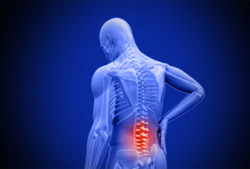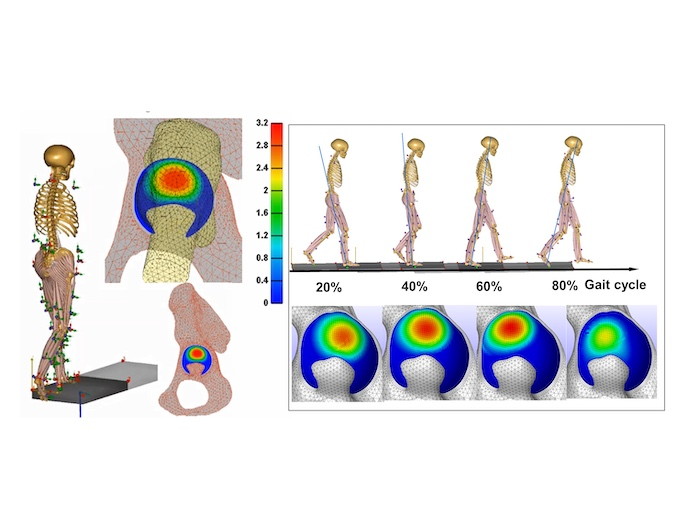Simulating intervertebral disc behaviour
The human spine, also known as the vertebral column or backbone, is made up of bony interconnected vertebrae. The vertebrae are separated by spongy fibrous intervertebral discs with jelly-like cores that play an important role in comfort and function. They absorb loads up to nine times the body's weight during strenuous physical activity while allowing the flexibility necessary for everyday motions. Acute injury and age-related degeneration of the intervertebral disc result in loss of integrity of the outer fibrous part of the disc (the annulus). Healing is slow because the disc system is the largest avascular structure (without a blood supply) in the human body. A new model developed with EU support of the project 'Multi-scale biomechanical modelling and simulation of the intervertebral disc' (DISCSIM) is providing insight into disc behaviour in health and disease. It promises better treatments for the millions suffering from disc degeneration. In order to obtain detailed microscopic structural information about the discs, samples from a steer's tail or a human spine were embedded in various media and slices were made on a milling machine. Simultaneously, two microscopes mounted to the milling machine captured images at each level. Samples were also subjected to micromechanical testing. Optimisation of the fixation device is underway but, in the meantime, data were collected to provide tissue-level elastic properties of the steer bone for computational models of the intervertebral disc unit. Based on experimental data, researchers developed a multi-scale computational model of the intervertebral disc in the commercially available finite element analysis software package ABAQUS. It is the first to accommodate interlamellar sliding, shearing and separation. Shear strain has been implicated as one potential initiator of intervertebral disc annulus failure. Annulus rupture can lead to herniation of the inner gelatinous layer, or a so-called herniated disc. The model was validated against compression data from steer tail intervertebral discs. Exploration of the parameter space of the DISCSIM model led to enhanced understanding of disc biomechanics that may help ease the socioeconomic burden of disc-related pathologies. The model will benefit scientists, clinicians and eventually patients in areas including scoliosis, back pain and disc degeneration.







